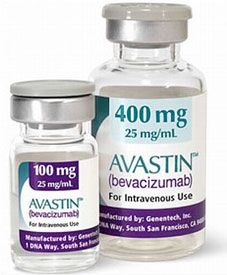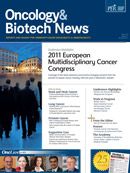Publication
Article
Maintenance Therapy With Bevacizumab/Pemetrexed Appears Superior to Bevacizumab Alone
Author(s):
Maintenance therapy with bevacizumab plus pemetrexed achieved a 4-month benefit in progression-free survival (PFS) versus bevacizumab maintenance therapy alone.

Maintenance therapy with bevacizumab plus pemetrexed achieved a 4-month benefit in progression-free survival (PFS) versus bevacizumab maintenance therapy alone in the final efficacy outcome analysis of the AVAPERL trial, which was reported at the 2011 European Multidisciplinary Cancer Congress.
“Overall, one line of treatment with cisplatin/pemetrexed/bevacizumab followed by maintenance therapy with bevacizumab or bevacizumab plus pemetrexed is well tolerated,” said Fabrice Barlesi, MD, of University of Méditerranee—Assistance Publique Hôpitaux de Marseille in France. “The most pronounced benefit in PFS was seen with maintenance bevacizumab/pemetrexed therapy, with a 50% reduced risk in disease progression compared with bevacizumab alone in patients with non–small cell lung cancer who achieve disease control.”
AVAPERL is an ongoing randomized, multicenter, open-label, phase III study that enrolled 376 patients from 11 countries with advanced, metastatic, or recurrent non—small cell lung cancer (NSCLC). Patients who achieved complete response, partial response, or stable disease (ie, clinical benefit) on 1 prior line of treatment with bevacizumab/cisplatin/pemetrexed (n = 253 patients) were randomized to maintenance therapy with bevacizumab alone or bevacizumab plus pemetrexed. Patients were treated until disease progression or unacceptable toxicity.
At a median follow-up of 11 months, the median PFS was 6.6 months with bevacizumab alone versus 10.2 months for the combination of bevacizumab/pemetrexed maintenance therapy (P <.001), with a 50% reduction in risk of disease progression favoring combination therapy. All subgroups derived preferential benefit from maintenance therapy with bevacizumab/pemetrexed, said Barlesi.
The median overall survival was 15.7 months in the bevacizumab arm but has not yet been reached in the combination maintenance therapy arm. The best overall response rate was 50% versus 55%, respectively; the median duration of response (5.7 mo vs 9.2 mo, respectively; P = .006) and the median duration of disease control (4.9 mo vs 7.8 mo; P <.001) favored the combination.
As has been previously reported, treat- ment was well tolerated, and quality of life did not deteriorate on maintenance therapy in either arm.

Rafal Dziadziuszko, MD
Rafal Dziadziuszko, MD, of Medical University in Gdansk, Poland, the trial’s formal discussant, called the PFS achieved in the combination maintenance therapy arm “impressive,” but he reminded listeners that the study population was a select group of nonprogressors on first-line therapy, which may have introduced bias.
Several trials have shown the benefit of pemetrexed maintenance therapy in NSCLC. “The important question to ask here is how much does bevacizumab add to pemetrexed maintenance, but AVAPERL asked the reverse question of how much does pemetrexed add to bevacizumab,” said Dziadziuszko.
He said the study should have included a pemetrexed-only maintenance arm to answer this question. The study should also have included biomarker analysis to identify patients who benefit from maintenance therapy.
“Although this study shows a strong signal for benefit of bevacizumab plus pemetrexed maintenance therapy, we need to know the benefit of adding bevacizumab to pemetrexed,” Dziadziuszko emphasized.










